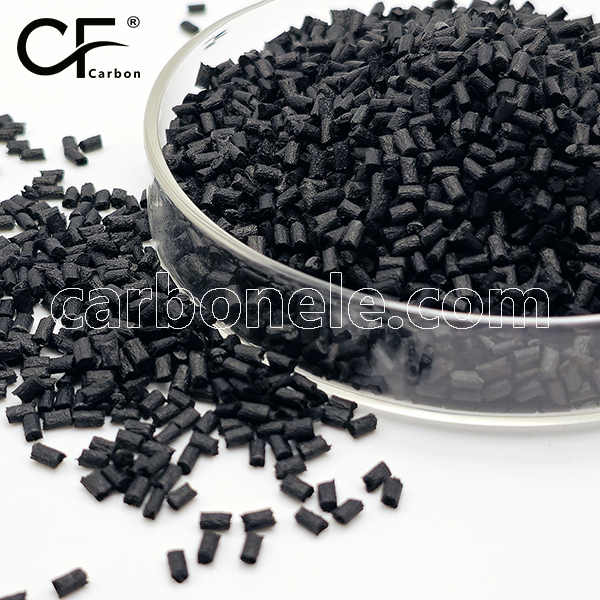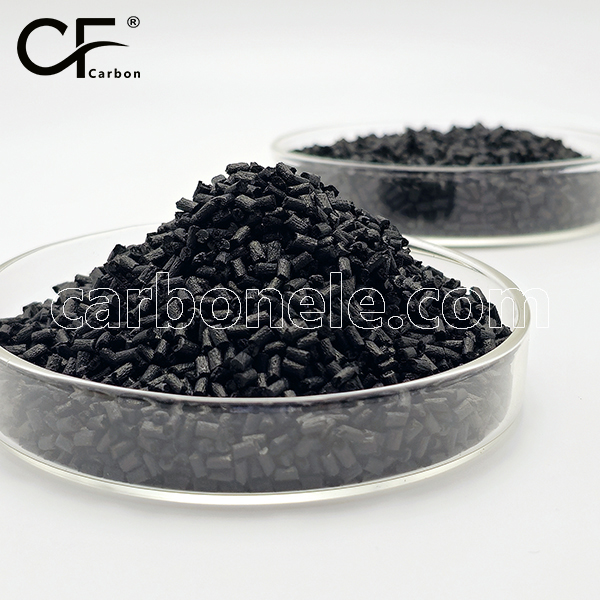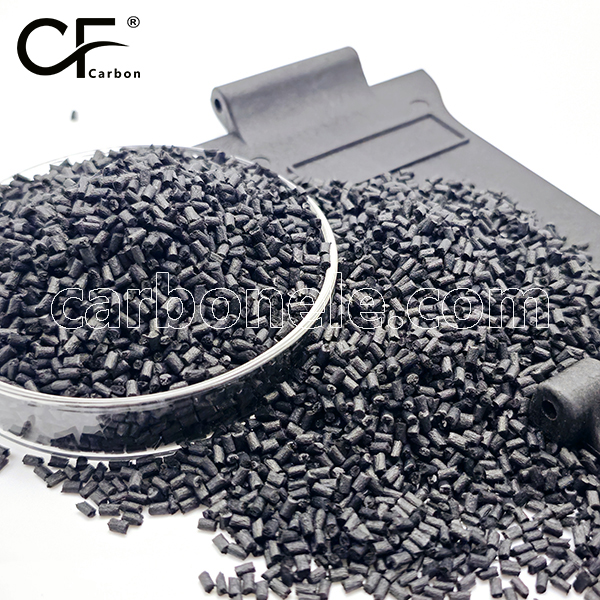
PA66-CF33 Raw Materials PA66 CF 30 Composites
PA66-CF33 (Model: PA6-CF-BCA3) is a composite with 33% carbon fiber reinforced nylon 66 (polyamide 66). It has enhanced properties and is widely used in auto, electronics, aerospace. For example, makes parts and casings.
- Manufacturer: Carbon New Material
- OEM/ODM: Acceptable
- Color: Black
- Free samples: ≤10kg
- MOQ: 100kg
- Port: Xiamen
- Model: PA66-CF-BCA3
- Fillers: Carbon fibers
What is PA66-CF33?
PA66-CF33 is a composite material based on nylon 66 (polyamide 66) and reinforced with 33% carbon fiber. Nylon 66 is a translucent, white or black crystalline polymer with good mechanical strength, thermal stability, chemical resistance and other properties.
After adding 33% carbon fiber, the performance of the material is further improved, with higher strength and stiffness, as well as better wear resistance and corrosion resistance. This material is widely used in fields such as automobiles, electronics, and aerospace. For example, it can be used to manufacture automotive parts, electronic equipment casings, and aerospace structural parts.
Differences between PA66 and 33% carbon fiber filled PA66
| Comparison Item | PA66 | PA66-CF33 |
|---|---|---|
| Composition | Polyamide 66, a simple polymer material formed by condensation polymerization of adipic acid and hexamethylenediamine. | A composite material composed of PA66 and 33% carbon fiber. The carbon fiber enhances the material properties. |
| Performance Characteristics | Has relatively high strength, stiffness, toughness, heat resistance, and good wear resistance. Performs well in general engineering applications and can be used to manufacture mechanical parts, automotive parts, etc. | Significantly improved strength, stiffness, heat resistance, and wear resistance. Can withstand higher stress and load, suitable for occasions with extremely high mechanical property requirements such as aerospace and high-performance sports equipment. However, toughness may be slightly reduced, which is specifically affected by the dispersion degree of carbon fiber and the interface bonding situation. |
| Processing Difficulty | Relatively good processing performance. Can be molded by various processing methods such as injection molding and extrusion. However, it has a relatively high melting point and viscosity, and processing requires higher temperature and pressure. | The fluidity becomes worse and the processing difficulty increases. Requires higher temperature and pressure, and the processing technology needs to be optimized to ensure that the carbon fiber is evenly dispersed in the PA66 matrix to ensure material properties. Higher requirements for processing equipment and technology. |
| Price | Relatively low. The cost mainly depends on raw materials and conventional processing technologies. | Usually higher. Due to the addition of high-performance carbon fiber and the difficulty in processing, the cost includes the cost of carbon fiber and the cost of complex processing technologies. |
Obtain information such as product specifications, performance, and price, and choose a suitable product according to your own needs. If you are interested in purchasing this composite material (PA66-CF-BCA3), please contact the manufacturer – Carbon New Material (Xiamen) Company directly.
How to Buy?
If you want to obtain information such as product specifications, performance, and price, choose a suitable product according to your own needs. Meanwhile, you can ask the manufacturer to provide samples for testing to ensure that the material meets your usage requirements. If you are interested in purchasing this composite material, please contact the manufacturer Carbon (Xiamen) New Material directly.

Frequently Asked Questions
Carbon (Xiamen) New Material Co., Ltd. aims to provide buyers with "one-stop" worry-free high-quality services. Here you can find all information about carbon fiber engineering plastics. If you still have questions, please send us an email for consultation!
-
How can I contact the manufacturer of a product that interests me?
When you find a product you are interested in, you can contact the manufacturer directly by sending an email and we will get back to you as soon as possible.
-
How do I find the products that interest me?
All you need to do is enter the keyword, product name in the search window and press the Enter key on your keyboard. Your search results page will then be displayed. You can also search within the product category pages on the home page. Each category is divided into subcategories, allowing you to refine your search and find products that interest you.
-
Where will I find a buying guide?
Please contact our after-sales service directly and we will provide you with a comprehensive operating guide.
-
What are CF Reinforced Thermoplastic Composites?
CF Reinforced Thermoplastic Composites are materials where carbon fibers are incorporated into a thermoplastic matrix. They combine the strength and stiffness of carbon fibers with the processability and recyclability of thermoplastics. For instance, they are used in automotive parts like bumper beams.
-
What are the benefits of CF Reinforced Thermoplastic Composites over traditional composites?
The key benefits include faster production cycles, easier recyclability, and better impact resistance. They also offer design flexibility. An example is in the manufacturing of consumer electronics casings where complex shapes can be achieved more easily.
-
How are CF Reinforced Thermoplastic Composites processed?
Common processing methods include injection molding, extrusion, and compression molding. Injection molding is widely used for mass production. For example, in the production of small components for the medical industry.
-
What industries use CF Reinforced Thermoplastic Composites?
They are utilized in aerospace, automotive, medical, and sports equipment industries. In aerospace, they can be found in interior components. In the medical field, they might be used in prosthetics.
-
How does the carbon fiber content affect the properties of the composites?
Higher carbon fiber content generally leads to increased strength and stiffness but may reduce ductility. A moderate content is often balanced for specific applications. For example, a higher content might be preferred in structural parts of a race car.
-
What are the challenges in using CF Reinforced Thermoplastic Composites?
Challenges include higher material costs, complex processing equipment requirements, and ensuring uniform fiber dispersion. Issues with adhesion between the fibers and the matrix can also arise. An example is in achieving consistent quality in large-scale production.























